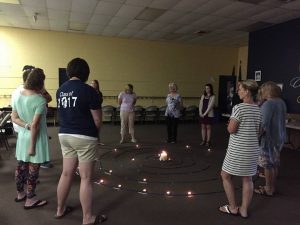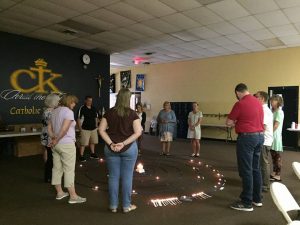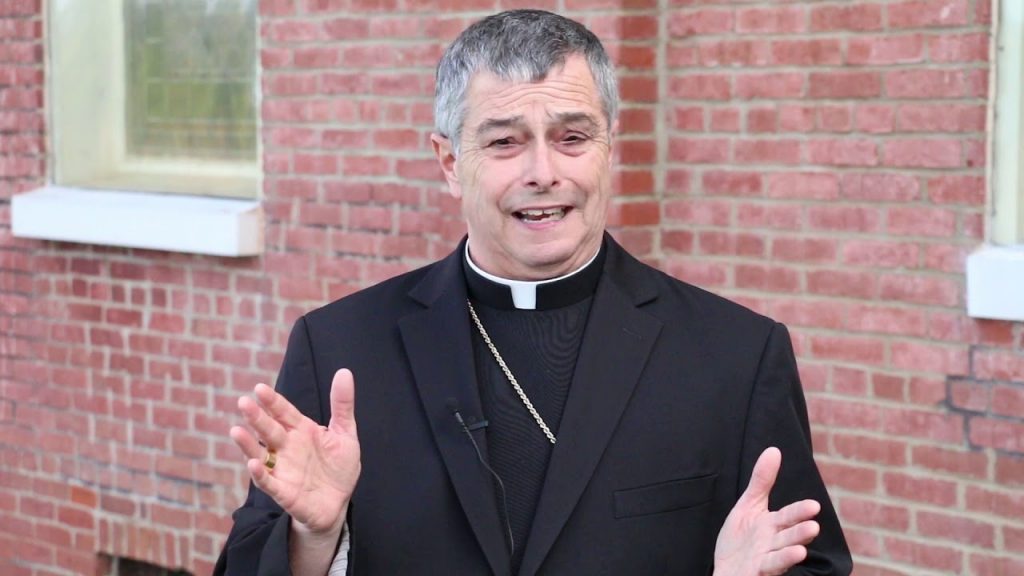The following article was written by by Dr. Emily DeMoor, Director of “Living & Leading with Love” Youth Theology Institute at Brescia University.
This blog is the third in a series of three blogs from the Diocese of Owensboro on the rationale and process for the development of new Diocesan Science Standards embedded with Catholic Identity. The first blog in the series, The Diocese of Owensboro Academic Standards and Catholic ID, addresses the need to show students the unifying principles of science with those of Catholicism. The second blog in the series, Owensboro Catholic Diocese Science Standards: Crafting a Sacred Whole explores the process used to review and revise the science standards. The completed standards document can be found here and at www.ncea.org.
We, who are created in the image of God, are able to investigate a creation that is remarkably tuned for our discovery. (Reason Series, Lesson 5, Slide 8)
 As we come to know creation, we may also come to know and love the Creator more deeply. Some might even say that we are hard-wired for God. While science teaches us about creation and its functioning, religion teaches us about what it means to be alive. And whereas the scientific mind knows from the outside, differentiating and taking things apart, the heart knows from the inside, putting things together. Both are vital to the formation of our youth. As Catholic educators, we do a great job of teaching to both the head and heart, but perhaps we haven’t done a good enough job helping students to integrate them.
As we come to know creation, we may also come to know and love the Creator more deeply. Some might even say that we are hard-wired for God. While science teaches us about creation and its functioning, religion teaches us about what it means to be alive. And whereas the scientific mind knows from the outside, differentiating and taking things apart, the heart knows from the inside, putting things together. Both are vital to the formation of our youth. As Catholic educators, we do a great job of teaching to both the head and heart, but perhaps we haven’t done a good enough job helping students to integrate them.
Towards this end, the Diocese of Owensboro, Kentucky has embedded the following aspects of Catholic identity throughout the new K-12 science standards: (coded)
- Scripture [S]
- Tradition
- Magisterium (papal writings) [M]
- Other theological writings [TH]
- The sacraments [SC]
- Catholic Social Teaching [CST]
- Saints and holy people of God [SA]
- Cardinal Newman Society “Catholic Curricular Standards and Dispositions Related to Scientific Topics” [CS]
Catholic scientists are included in the introduction to each section.
Our students seek truth, coherence and hope. Thus, in providing professional development sessions on the new standards and Catholic identity to our teachers, we focused upon three potentially challenging areas of teaching and learning: evolution, environmental science, and engineering.
These areas of science provide a context for life’s sacred unfolding, a call to earth stewardship, and a capacity for empowering our youth. The story of an emergent universe reveals an original unity in which all of creation was bonded together as one; a bond that continues to this day. It teaches us that life always finds a way, despite the odds and obstacles, and that this is not a matter of chance, but rather of intention. Understanding and caring for God’s creation provides an opportunity to actively participate in ensuring that life will continue. And engineering provides an interdisciplinary outlet for creativity, a methodology for solving the problems of the world, in alignment with Catholic Social Teaching, and a vision of vocation through servant leadership.
 In a PD session on evolution we took “a walk through time,” lighting candles that marked events along a spiral path which originated from a central three-wicked candle representing the Trinity. Through this walk we uncovered the presence of the Creator at several significant moments of the unfolding story of the universe and identified them as “moments of grace.” At exactly the right moment in the story God became enfleshed in Jesus, saving humankind and illuminating the darkness in human minds and hearts. While this is a powerful pedagogy, we allow spaces for evangelization to occur at any moment of scientific inquiry or discovery, as the Spirit moves.
In a PD session on evolution we took “a walk through time,” lighting candles that marked events along a spiral path which originated from a central three-wicked candle representing the Trinity. Through this walk we uncovered the presence of the Creator at several significant moments of the unfolding story of the universe and identified them as “moments of grace.” At exactly the right moment in the story God became enfleshed in Jesus, saving humankind and illuminating the darkness in human minds and hearts. While this is a powerful pedagogy, we allow spaces for evangelization to occur at any moment of scientific inquiry or discovery, as the Spirit moves.
The present moment in our shared story as Catholic educators is also a moment of grace; one in which we may break through to more comprehensive ways of thinking about science and religion; one in which life, and life more abundantly, will find a way. It is not a call to arms, but rather a call to reconciliation between faith and reason, so that we may more effectively lead our students to live in wholeness and holiness in one sacred life community. May we hammer our swords into plowshares so that we may feed the hungry minds and hearts of our Catholic youth.
